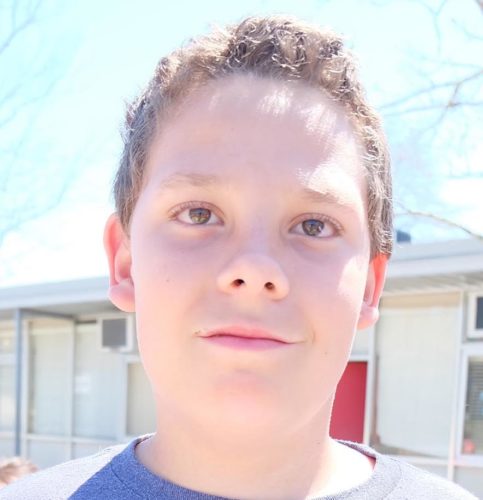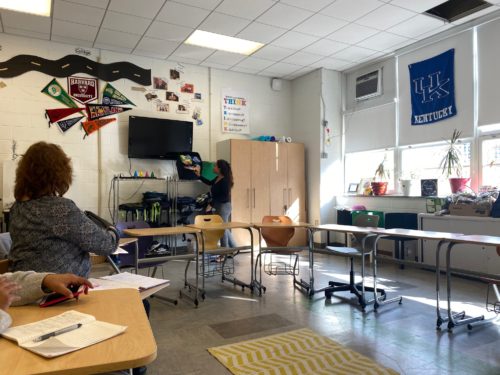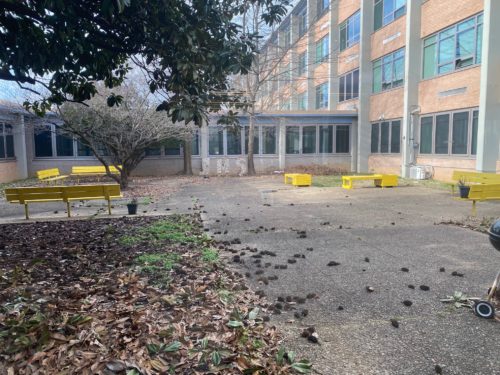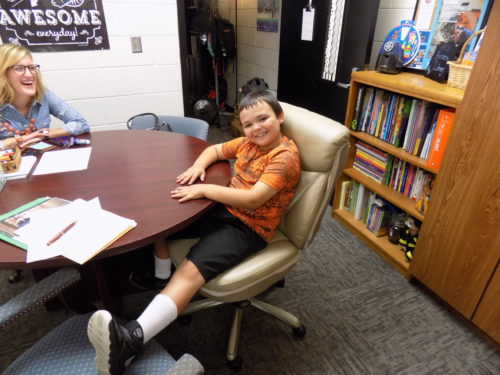* Note: This blog was written prior to the COVID-19 pandemic. Although much has changed regarding our sponsored children’s learning experience in the past months, our On the Road stories remain relevant in regards to our volunteer coordinator’s work and the impact of sponsorship on children in our program thanks to our sponsors. We are pleased to continue to share stories with you about our work.
***
Nestled in the picturesque Appalachian Mountains and steeped in a rich cultural heritage lies Wolfe County, Kentucky.
As is the case for many areas of Appalachia, Wolfe County’s natural beauty belies the abject poverty in which many of its residents live. Wolfe County carries the unfortunate distinction of being one of Kentucky’s most impoverished regions.
As is the case for many areas of Appalachia, Wolfe County’s natural beauty belies the abject poverty in which many of its residents live.
At one time, logging, tourism for nearby mineral springs, and factories employed the majority of this area’s residents. Over time, these industries vanished, leaving ghost towns, unemployment, and high poverty rates in their wake. High dropout rates and adult illiteracy only serve to fuel the cycle of poverty.
“Today, leaders and residents in Wolfe County are working hard to reimagine new opportunities to rebuild the local economy,” explains our Director of U.S. Programs, Renée Kube.
“One area being explored is tourism. Wolfe County is home to the outstanding Red River Gorge, a canyon system in the Red River. The gorge lies within the Daniel Boone National Forest, and it has been designated a National Historic Landmark and a National Archeological District. There are many high sandstone cliffs, rock shelters, waterfalls, and natural bridges. There is a gorge that is a popular place for rock climbers. A few small businesses have sprung up to support tourists, ranging from those selling supplies to an outstanding pizza restaurant.”
A long way to go
Regardless of the efforts, the county still has a long way to go for real economic development. Since the collapse of the coal industry, many of its families struggle with poverty, hopelessness, and addiction. Sadly, as always, the children are the most vulnerable — including those at our affiliated projects, Wolfe County Middle School and High Schools.
Per the Annie E. Casey Kids Count Data Center, the county’s average child poverty rate for 2014-2018 was 38%. From 2012 to 2016, it was a wretched 55%. The improvement is not because of the county’s ability to address poverty, but because so many families have moved out in hopes of better opportunities.
Working to support kids in need
Fortunately, the Family Resource Youth Services Center at Wolfe County Middle and High Schools can help children and their families to succeed in school by minimizing or removing non-cognitive barriers to their learning.

Kids in Wolfe County are fortunate to have a volunteer coordinator like Connie to look out for their well-being.
The resource center’s offerings range from Born Learning (for infants and preschoolers) to Back to School Bashes and Ready Fests, to Red Ribbon Week (drug awareness and prevention), to recognizing and responding to violence, and to bringing partners and resources to address the children’s well-being and success.
“Children Incorporated is proud to be able to partner with the Family Resource Center in Wolfe County Middle and High School. It is in these places that we hope to help children develop resilience, to graduate from high school, and eventually to break the cycle of poverty by having work that will support themselves and their own families someday,” said Renée.
Getting to meet with Connie
Wolfe County Middle and High School are side-by-side schools, and the Youth Services Centers are both run by our volunteer coordinator, Connie. The total enrollment at the middle and high school is about 600 students. Children Incorporated U.S. Programs Specialist, Shelley Oxenham, visited with Connie recently to find out more how our program is supporting her work.
“I met with Connie at the high school during my last visit to Wolfe County. Connie says she likes our sponsorship program because it helps her kids with clothing, which is very important to middle and high school kids,” expressed Shelley.
“She takes her high school students on a bus to Lexington to shop at Kohls, where the kids can pick out clothes and shoes. She says it’s an enjoyable experience for them, and she is grateful that she can be so flexible with the program.”
Connie also told Shelley that transportation is a significant barrier for her students; many of them rely on the school bus system to get to and from school. Because of this, these students are unable to participate in any after-school programs, tutoring programs, or extracurricular activities because they do not have a way to get home.
Beyond transportation concerns, the biggest challenge for students at the middle and high school is the home life.
Fortunately, the school has been awarded a grant for the 21st Century after-school program, and part of the grant money will be put towards bus transportation for the students. Per the 21st Century website: “21st Century Community Learning Centers provide essential support to students who are often underserved and offer creative, engaging learning opportunities to kids of all ages and backgrounds.”
An even bigger concern
Beyond transportation concerns, the biggest challenge for students at the middle and high school is the home life. They come to school, and their minds are elsewhere because they are worried about where they will sleep from day to day or worrying about mom or dad being on drugs.
Often there is not enough food in the house, and they come to school hungry and tired after the weekend. Many of the students are living with grandparents or other relatives. A growing number of students are moving into the area because they are in foster care.
These students have grown up in volatile environments and bring a lot of challenges with them to school each day. Often these students act out in school, which can be difficult for the teachers and other students.
Even with all the issues these children face, the high school’s graduation rate is very high, and that is thanks to a dedicated and caring staff and administration at the high school.
If a student is failing several classes, they can take online courses or attend one on one classes at an extension campus to graduate.
“Connie is hoping that with the new after-school program, the graduation rate will be even better. After graduation, some students will attend college while others attend technical college or transition to work,” said Shelley.
***
How do I sponsor a child in Kentucky?
You can sponsor a child in Kentucky in one of two ways: call our office at 1-800-538-5381 and speak with one of our staff members or email us at sponsorship@children-inc.org.
SPONSOR A CHILD






